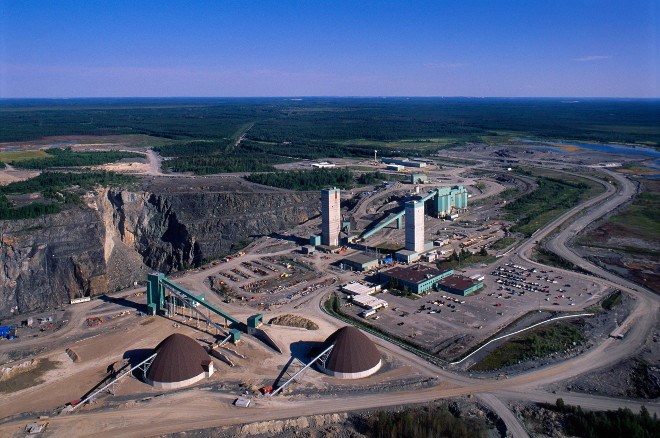A new report is predicting a shortage of 2,819 workers in the mining industry in the Cochrane District over the next 10 years and suggests a number of recommendations to combat the trend.
The report, released on June 6 by the Far North East Training Board (FNETB), found that there will be a 14 per cent expansion in the workforce and a workforce retirement forecast of 30 per cent, for a combined 44 per cent deficit in the workforce between 2017 and 2027.
All nine of the active mines in the region participated in the study, as did 150 service and supply companies.
People working in the industry have been aware of the growing shortage for years, noted Julie Joncas, the FNETB’s executive director. But the sheer number of workers required was surprising given that two mines are nearing the end of their useful lives – De Beers’ Victor diamond mine is slated to close in 2019, while Glencore’s Kidd Creek base metals mine in Timmins is scheduled for closure in 2023.
“Retirements alone are going to have a huge impact,” Joncas said. “And that doesn’t mean that all these people will retire during that period; it means they become eligible to retire.”
Roughly 40 per cent of the workforce in the region will become eligible to retire between now and 2031, marking the last wave of baby boomers, she said, and once that’s factored into the existing shortage, the region will really be “feeling the crunch” for new workers.
According to the report, the variety of positions needing to be filled ranges from underground miners to metallurgists and everything in between. Truck drivers, electricians, welders, mechanics, millwrights, and supervisors are all on the list of occupations of interest. Although there is a greater demand for some positions over others, they’re all roles that are critical to the mining industry.
“What I found interesting, in terms of opportunities in our region, is that a lot of those occupations and challenges are also in high demand in other industries (like) construction, forestry. Everyone’s looking for truck drivers, for tradespeople,”Joncas said. “So it definitely showcases that there are and will be opportunities in our region.”
At least 14 per cent, or 925 positions, is being filled by out-of-region workers, the report found.
Fred Gibbons, president at Northern College in Timmins, said the results of the report jibe with what Northern Ontario’s colleges have been seeing for years, and they’ve been tailoring their program offerings according to need from the industry.
But even though they offer the programming, it’s still a challenge to attract students into the skilled trades, he said.
Too often, parents aspire for their children to go into a profession – doctor, lawyer, engineer, dentist – but overlook some of the most obvious career opportunities that are plentiful in the North, which are also very well-paying positions, he said.
“I think there’s still a strong marketing and communications message that has to be delivered to parents and other influencers as they make vocational choices for postsecondary, be it college or university,” Gibbons said.
It’s also difficult to change a long-held perception of what a job in mining means, he added, noting that a study done by the Mining Industry Human Resources Council of Canada found 66 different occupational categories describing jobs at mines.
“Mines employ accountants, mines employ human resources practitioners, they employ occupational health and safety specialists, they employ health and safety nurses,” Gibbons said. “They employ the same kinds of people that most businesses in the community employ as well; they’re just competing for a very small labour pool.”
In addition to targeting youth, the report recommends recruitment and retention strategies throughout the region, including those aimed at target groups, such as women and Indigenous peoples.
Joncas said in some cases, the industry looks to its experienced workers to fill in some of the gaps. Some companies are bringing back former workers to mentor new hires, while in other instances, they’re enticing them out of retirement because they can’t find people to take on vacant roles.
“Experience is gained with time, but some of the knowledge, I think, would ensure a smoother transition if it was transferred to the younger generations,” she said.
At the report’s release, Joncas and the FNETB set to work helping to change the misperception about mining by participating in a career fair during the Canadian Mining Expo in Timmins in early June. There, 850 students in Grades 6 to 12 visited different booths represented by various employers who seek workers for the industry.
It’s the first small step to start exposing students to the available options early on, rather than waiting until they’re entering postsecondary education to convince them that a career in mining is a very viable path forward.
Yet there is still much work to do.
“Releasing this report is not the end of the project,” Joncas said. “I think it’s the beginning of a new phase, and that means how can we use this information to inform those who need to be informed and who are in a position to address these labour shortage that we have.”
The board’s working group will reconvene in early fall to discuss next steps for rolling out its recommendations.




